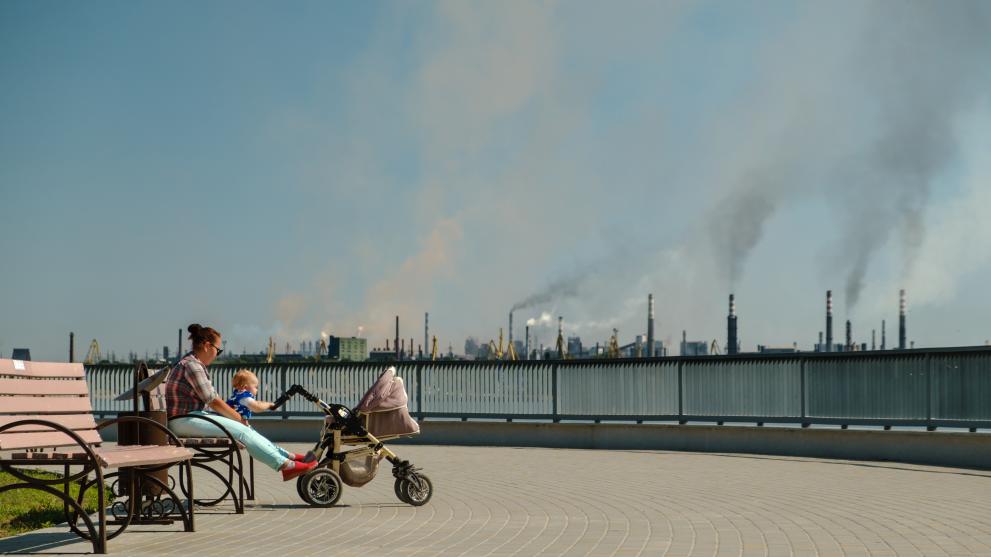
Neonatal disorders bring a huge economic and medical burden; of the 135 million infants born globally in 2019, 2.42 million (1.79%) died within 28 days of birth. Significant advances have been made to improve neonatal health in past decades – including improved maternal nutrition and prenatal screening/healthcare – and the risk of newborn disorders has been greatly reduced. However, the negative impact of air pollution on neonatal health is increasing, with exposure to ‘fine particulate matter’, PM2.5, known to severely affect the health of pregnant women and their newborns1.
PM2.5 is particulate matter with a diameter of 2.5 micrometres (µm) or less, emitted largely by fuel combustion for domestic heating, industry, agriculture and transport. According to the European Environment Agency, air pollution is the single largest environmental health risk in Europe. The EU has taken steps to address this, including the European Green Deal and zero pollution action plan, the latter which aims to reduce by more than 55% the health impacts (premature deaths) of air pollution by 2030 (cf 2005). This initiative has brought success so far, with a 45% drop in PM2.5-related premature deaths seen between 2005 and 2020 – attributable to a decline in PM2.5 concentrations, and therefore exposure.
Despite such progress, in 2019, 92% of the global population was exposed to levels of PM2.5 exceeding the air quality guidelines laid out by the World Health Organization (WHO). This new study claims there is a pressing need for targeted air pollution control strategies to reduce the burden of associated neonatal disorders (abbreviated here to NDB: ‘neonatal disorders burden’).
The study’s authors assessed spatiotemporal global trends of neonatal disorders caused by ambient and household PM2.5 at global, regional and national levels from 1990 to 2019. They sourced data from the 2019 Global Burden of Diseases, Injuries, and Risk Factors Study, which estimated the NDB in 204 countries and territories worldwide. Their research tracked deaths and ‘disability-adjusted life years’ (DALYs; the loss of the equivalent of one year of full health) for 369 diseases and injuries and 87 metabolic, behavioural and environmental risk factors by age, sex, year and location.
In the study, neonatal disorders were split into five categories: gestation neonatal preterm birth, neonatal encephalopathy due to birth asphyxia and trauma, neonatal sepsis and other neonatal infections, haemolytic disease and other neonatal jaundice, and other neonatal disorders. The researchers estimated the annual percentage change of NDB to quantify temporal trends, and separated the impacts of household (e.g. open fires, use of coal) and ambient (outdoor) PM2.5.
In 2019, approximately one-fifth (20.77%) of the global NDB was attributable to PM2.5 exposure: 7.54% for ambient PM2.5 and 13.23% for household PM2.5. Although the global proportion of NDB attributable to household PM2.5 has decreased substantially in the past 30 years, that attributable to ambient PM2.5 has strongly increased, especially in areas of low development. The NDB was concentrated in the early neonatal period (0–6 days), higher in males, and the main types of burden were preterm birth and neonatal encephalopathy. The researchers speculate that the rates may be higher in male babies due to their larger average size and, therefore, higher oxygen requirements.
The highest rate of ambient PM2.5-related neonatal disorder DALYs in 2019 was seen in South Asia, while the fastest increases were in Eastern Sub-Saharan Africa (estimated annual percentage change of 2.55) and South Asia (3.88). Overall, India, Pakistan and Nigeria accounted for more than 60% of the total NBD DALYs (compared to 2% and 3% for Europe and the Americas, respectively), reflecting deep inequalities between different global regions. Given its profound effects on maternal and neonatal health, the regulation and supervision of PM2.5 should be strengthened in lesser-developed countries, say the researchers, with possible measures including industrial dust control, improving the structure and ‘cleanliness’ of energy consumption, and controlling exhaust emissions. The WHO has recommended that the annual average target value of PM2.5 should be reduced from 10 micrograms per cubic metre of air (μg/m3) to 5 μg/m3.
The researchers also explored the metric of ‘population attributable fraction’ (PAF – the proportional reduction in NDB we would see if pollution was reduced).This was highest in East Asia, implying that measures to reduce NDB would be especially effective in this region. For non-developed and very low-developed countries, NDB was less connected to PM2.5 due to the heavy burden brought by other risk factors, such as infection, malnutrition, insufficient prenatal screening and inadequate medical resources. The PAF for one type of neonatal disorder – haemolytic disease and neonatal jaundice – was highest; this could help guide and inform prevention strategies targeting these specific disorders. Although the risks are lower in more developed countries, rising levels of PM2.5 raise concerns over neonatal health risks everywhere, including in the European Union.
Footnotes:
- Exposure to PM2.5 during pregnancy allows pollution to cross the maternal-fetal blood barrier and interfere with fetal development.
Source:
Zhao, H., Zhang, X., Wang, W., Shi, J., Lai, W., Li, Y., Zhang, C., Guo, L., Gong, J., Li, L. and Lu, C. (2023) Global, regional and national burden of ambient and household PM2.5-related neonatal disorders, 1990–2019. Ecotoxicology and Environmental Safety, 252: 114560. Available from: https://doi.org/10.1016/j.ecoenv.2023.114560 [accessed 27 July 2023].
To cite this article/service:
“Science for Environment Policy”: European Commission DG Environment News Alert Service, edited by the Science Communication Unit, The University of the West of England, Bristol.
Notes on content:
The contents and views included in Science for Environment Policy are based on independent, peer reviewed research and do not necessarily reflect the position of the European Commission. Please note that this article is a summary of only one study. Other studies may come to other conclusions.
Details
- Publication date
- 10 August 2023
- Author
- Directorate-General for Environment

